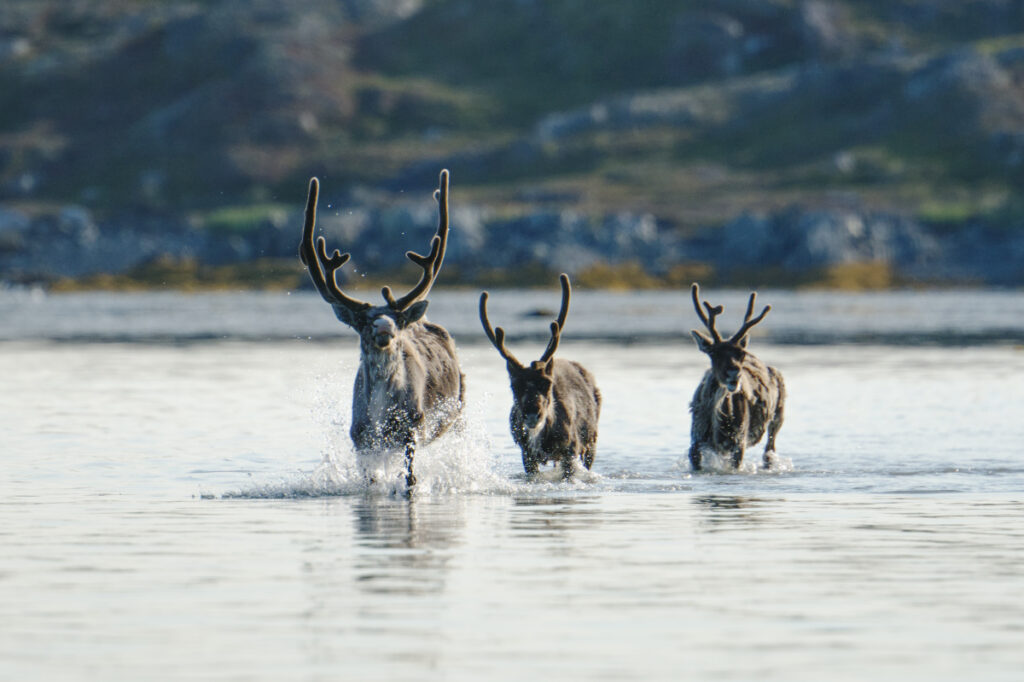Qinngua near the glacier tongue of Søndre Qipisarqo Bræ, 13th July 2013

Shimmering sheets of spray scatter high into the air. The bloom of sparkling droplets glitter as they catch the evening light of Greenland’s eternal summer sunsets. Three curious caribou send cascades of spray flying as they trot towards us, heads held up, nostrils flaring, ears peeled, eyes trained on what must be quite a surreal sight to them.
We’re at the very end of a navigable fjord that ends in two glacial flood plains. The water is milky turquoise, the bottom shifting sandbanks of fine sediment accumulating from the glacial runoff. Earlier, we had to turn round and find a sheltered bay, as we didn’t find enough depth for the Atlas to push through to our intended anchorage at the very head of the fjord. With the boat anchored in a beautiful spot behind a natural causeway, looking towards the glacier in the distance, we hopped into the dinghy for reconnaissance.
We had not been going even 10 minutes before we spotted the three caribou in the knee-deep water. Motor off, we drift towards them, three figures in a black rubber dinghy. Alex and Arnaud shoot photos of the unbelievably bewitching scene, while I slowly paddle us onwards to intersect their path.
The animals are incredibly curious, pulled forward as if by magnetism. The three caribou, one mature male with impressive antlers who is clearly the leader of the team, and two females with smaller antlers always one step behind, seemingly more nervous.
Their coats are ragged and in tatters, the coffee-coloured summer fur showing through between unkempt clumps of long ivory winter wool. The pale hairs sway in recurrent waves in the light breeze like fields of golden wheat glowing in the light. Earlier, we had picked up tufts of the soft fleece from the heather on one of the islands and marvelled at how silken, delicate and light it is.
Their developing antlers are still in velvet, the brown downy skin they are covered with while growing. Only around August will they have fully regrown, in time for the rut. Female caribou also have antlers, the only deer species to do so.
Intermittently stopping to observe us, they lower their heads and drink in big gulps, not letting down their guard down for a moment. They are so close that we can clearly see their glistening inquisitive eyes, surrounded by long lashes, and their flared nostrils quivering and scenting, testing the air. Rimmed with bristling backlit hairs, their expressive ears pivot eagerly, taking in the surroundings.
In time, they turn and trot off towards an island, flinging lustrous fountains of luminous water in the air around them.
We watch them depart and turn to continue our journey too.